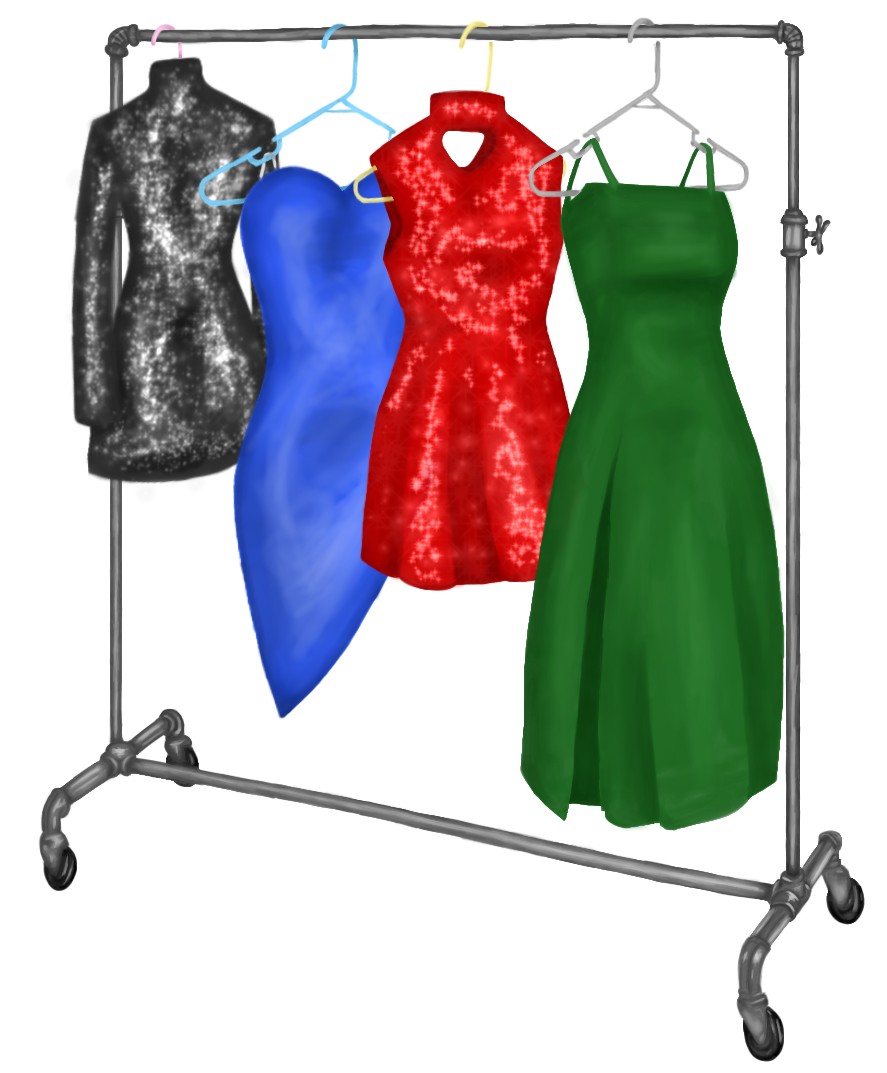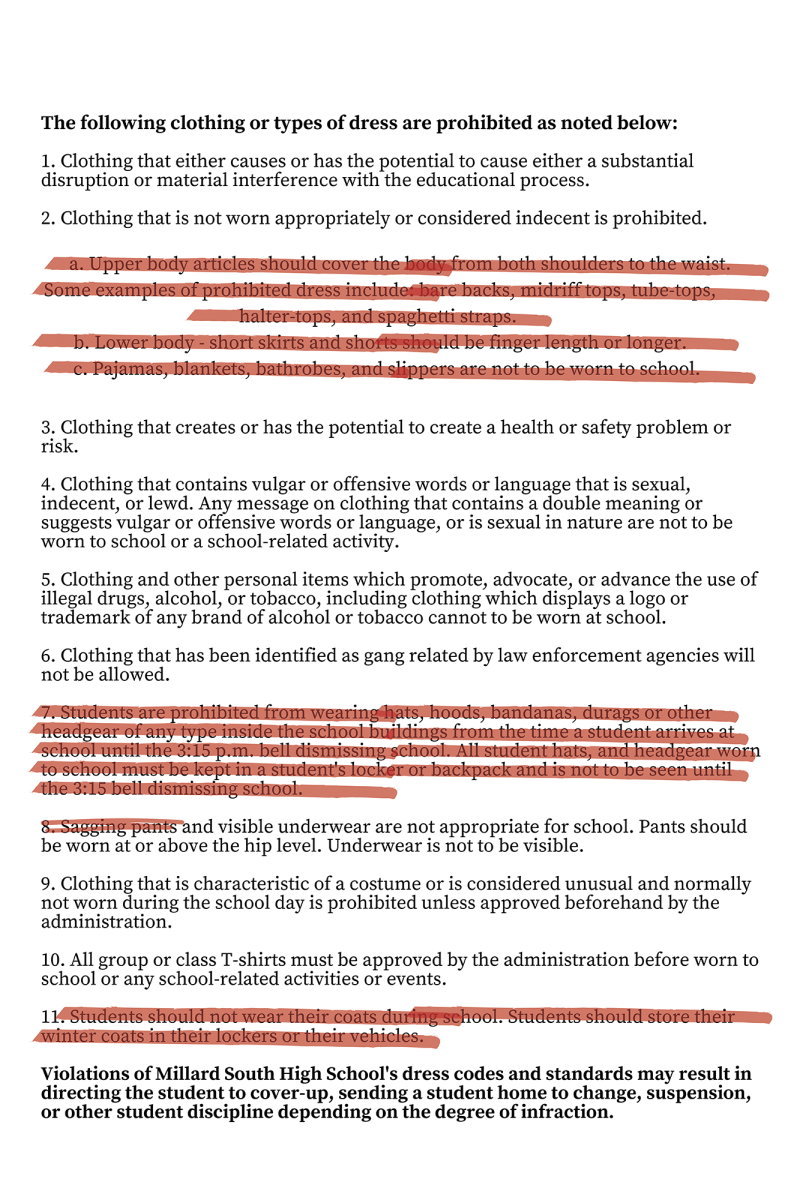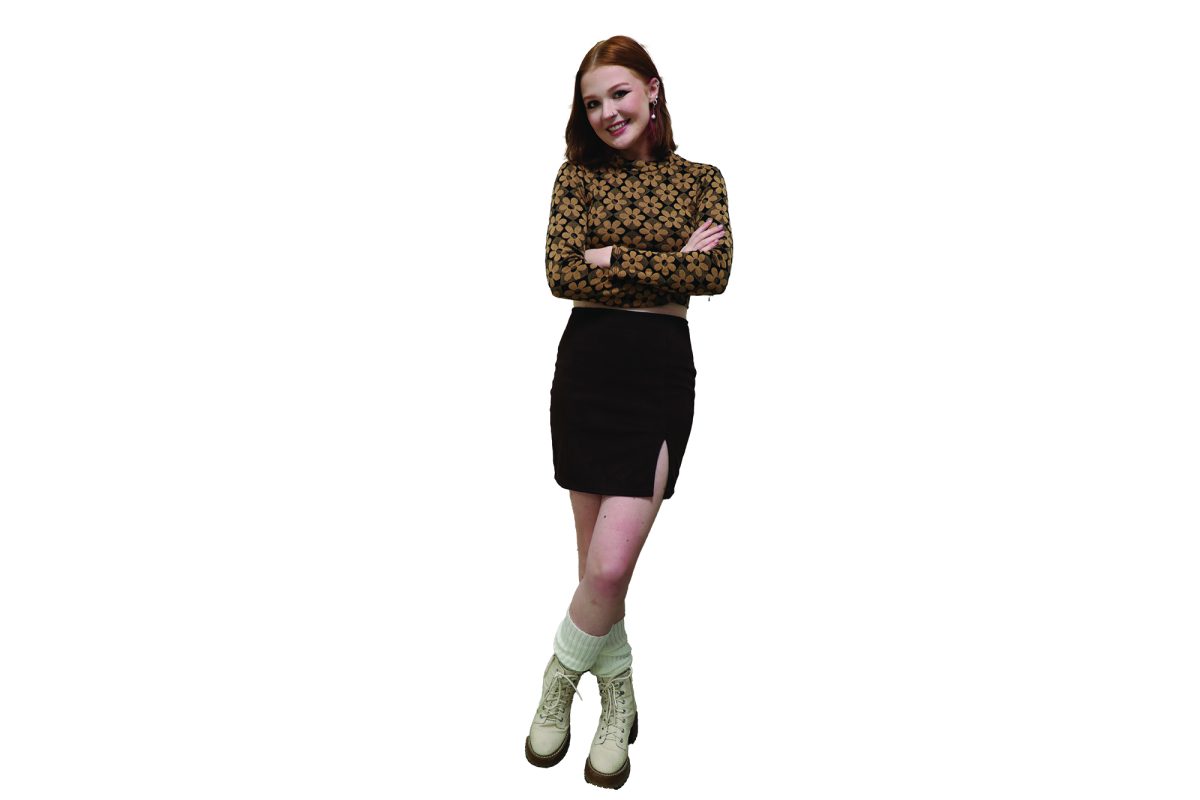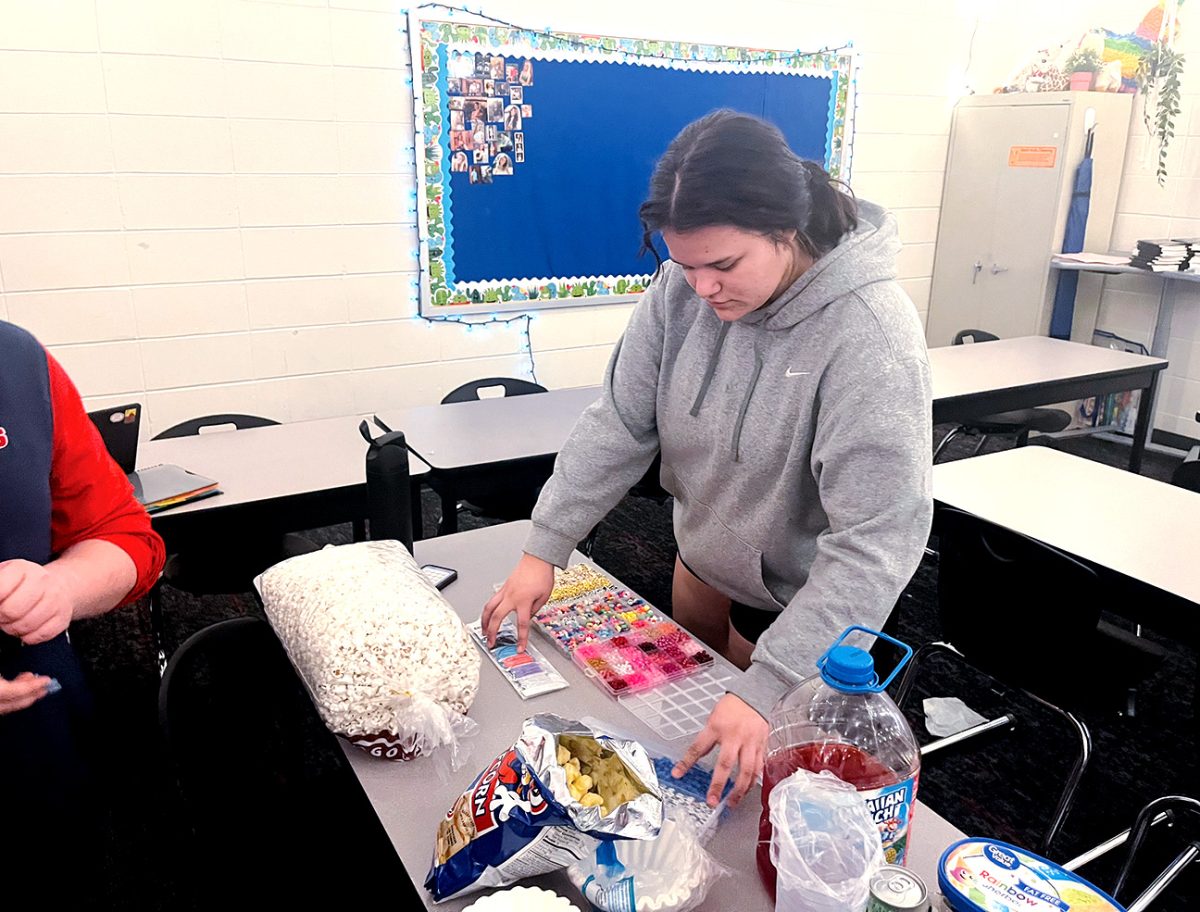Clothes and Codes
In the early weeks of the semester, while The Patriot Way and handbook presentations were commencing, one major alteration to our school’s rules went unnoticed on page 19 of the handbook: the dress code was shortened.
“I would say we decided to make this change to offer more flexibility to our students,” Dean of Students Lynn Hill explained. “I think this current dress code helps students have the freedom of expression to a point that we don’t disrupt the environment,” she said.
Compared to the 2022-2023 Student and Parent Handbook, this school year’s dress code section is shorter and simplified to a handful of simple rules: don’t wear costumes, don’t show your underwear, don’t wear clothing in a way it was not intended, don’t wear clothing that could present a health risk, promotes gangs/drugs/alcohol, and lastly, don’t wear anything offensive.
Although this may seem like a longer list of rules, the 2023-2024 dress code is much more relaxed than the previous year’s code (see image.) Within the former dress code, pajamas, slippers, blankets, coats, hats/headwear, shirts revealing midriff, shoulders, or cleavage were prohibited.) In addition to those mentioned, the sagging of pants was also blatantly called out whereas this year, the actual word ‘sagging’ is nowhere to be found. Currently, students are told to keep pants at the waist.
According to Hill, the handbook gets updated once a year by administrators. The set of expectations is reviewed in the spring, changed in the summer, and put into place in the fall.
“Societal norms change with every passing year,” explained Hill. “Some students are very meticulous and spend a lot of time choosing what they’re wearing. And then there are other students that are like, ‘That’s a clean outfit. I’m putting that on today.’ Everybody expresses themselves differently. Some people might express themselves through their writing, art, or music. But some people choose to express themselves through their clothing. If you look at your administrators, we’re always wearing Millard South gear. We have a lot of pride in working here. Then you have some of our athletes, clubs, and organizations. They’ll wear their gear with their activity on it,” Hill said.
English teacher Andrew Kanago expounded on this subject. “Fashion is so intrinsic to some kids’ sense of self and development that we should, as a school, think long and hard about trying to stifle that.”
Despite the major change and added freedoms, the student body as a whole seemed unaware of this change.
Sophomore Isabella Rakosky said she didn’t recall the change ever being brought to her attention. “I was not aware that the dress code had been changed because [staff] didn’t do anything to promote it or let anyone know anything about this change. I think that everyone should have the ability to express themselves how they want. Each kid’s style and how they want to come to school should be up to them,” she said.
Similarly, senior Logan Perrin said he was also surprised to hear the news. “I had no clue that the dress code was changed, but I approve of the changes. It provides much more freedom of expression for students. Personally, I think dress codes are outdated and need full reevaluation.”
However, it seems that students were not the only individuals unaware of the alterations to the dress code.
“I would agree that [teachers] were never officially informed of most of the changes but we were told about the hat change. I just noticed certain things didn’t seem to be enforced by admin,” social studies teacher Kristy McGuire said.
To clear up the uncertainty, Hill expounded on the subject.
“Mr. Pinkall did not address the dress code in the assemblies via Zoom that we had at the beginning of the school year. To be fair, can you imagine going through this entire handbook? It is 78 pages long. In a 15-minute presentation, you’re not going to see all of this. So that’s why we didn’t bring up the changes. That’s why [students] have access to this. Not that everybody is going to read all 78 pages. It is not very light reading, I’m sure,” she explained.
Although the handbook allows much more freedom, Hill agreed that the language of the new dress code guidelines is not very specific. “The handbook is vague to give a little more flexibility or a little bit more freedom to express themselves through clothing,” Hill said.
“If students are confused what is considered indecent or unusual, the first step is talking to a parent or guardian in the home. I’ve had students that have had inappropriate clothing on, and I’ve called home to see if we can have something brought up. Then, the parent was absolutely shocked. They had no idea their student was wearing something inappropriate because that’s not what they left the house in that morning. The student then says they got the shirt from a friend. So if students are seeking out that clarification, it should start at home with the parent or the guardian,” Hill said. “Then with that, if the parent or guardian says ‘that looks fine to me’ but the kid’s shirt has an alcohol label on it, an administrator will ask them to turn that shirt inside out or give them a different shirt to wear. It’s just a conversation with the guardian, student, and admin about what’s okay and what’s not okay,” Hill explained.
Kanago agreed with Hill’s perspective regarding the vague language of the dress code.
“Well, generally speaking, the language is okay in the sense of having kids not dressing indecent, and that it’s not sexist or biased against any one particular group of people. So, that part is fine with me. And from what I can tell, I don’t think that the administration has really been cracking down on anyone in particular, so it seems to be working okay,” he explained.
When asked how she felt about the changes, McGuire added a new viewpoint to the discussion.
“I feel mostly okay. Students’ behavior and academics are most important, not what they have on. What is difficult about dress code is that not all teachers or students have the same definitions of acceptable dress or indecent dress. I guess I often know when I think a student’s dress is over the line but it may not be what another teacher thinks is over the line,” she stated.
Adding on, McGuire brought up her opinion on the word choice and clarity of the guidelines.
“I am not sure [the wording] is super clear. But even if it was clearer, that doesn’t mean kids will follow the rules. Sometimes, I feel like more kids defied the dress code when it was more specific and so [administration] pushed back.”
Regarding witnessing actual dress code violations, Rakosky couldn’t recollect ever seeing a fellow student wear something worthy of discipline.
“Personally, I have never seen anyone dress outrageous enough to be dress-coded,” said Rakosky.
Likewise, McGuire said she doesn’t personally feel the need very often to talk to a student about their clothing.
“I do not dress code kids very often. It would take really short shorts or something fairly skimpy. I used to dress code kids more often when the admin really wanted certain things like no spaghetti straps or midriffs. I feel most of the time it was related to female students. For guys, it was occasionally the super saggy pants where they were all the way under their behind, and most of their underwear was exposed. I don’t feel like we are seeing as much of that anymore.”
With the changes currently in place, patriots now are given additional freedoms when it comes to getting ready each day. Wrapping the conversation up, Hill acknowledged that students tend to abide by the rules.
“I think 99 percent of the time, our students dress and act absolutely fabulous. Very rarely do we have dress code issues. And obviously, as the weather changes, it gets colder and more students are going to wear jackets, hoods, and things of that nature just to stay warmer,” Hill said.
I’m not a night owl or an early bird. I am an at-least-10-hour-sleeper. But despite this, I try to wake up every school day at around 6:20 a.m. for one sole purpose: dressing up.
Whether it be my white platform boots, specific arrangement of earrings, or my many pairs of funky jeans, you will rarely see me wearing casual clothes. After I get out of show choir, get off work, or get done stopping by my friend’s place, no matter how tired I am, I will take about 30 minutes to put together my outfit the night before I wear it. In my world, dressing up is a must for me to feel like myself.
Typically, I will try my best to pick one piece of clothing to base the outfit around. It could be boots, multicolored jeans, a crop top, etc. Once I have that base decided on, then comes the multiple rounds of trial and error. I will grab a shirt for example and see if the colors go together well with the wash of the jeans. It is common for me to ultimately decide on a tight top and a pair of denim pants, adding a jacket if it is cold enough outside. Layer by layer, I build my main outfit. Finally, I decide on the accessories. This is by far one of my favorite parts of the process.
Usually I start by picking out earrings for each of the nine holes in my ears. Hoops are an absolute go to for me due to their ability to easily spice up any at-tire and to match well with pretty much anything. To top the outfit off, I finish with either a pearl necklace or layered silver necklaces.
Despite currently considering myself experienced in creating a combination of clothing, I didn’t always have the confidence to express myself.
In middle school, I was considered pretty shy. I tried my best to follow suit by wearing leggings and a sweatshirt. But things changed for the bolder and better when I got to high school.
Suddenly, having style was a thing at school. And not just one style was accounted for- but a multitude of unique aesthetics and different takes on what an outfit could be. I emerged into a world of wide-leg jeans, pleated skirts, Jordan sneakers, and fishnet tights.
After seeing what was possible in the world of style, I was determined to up my game. I was tired of staying quiet-and looking quiet each day. I began to explore online and at outlet malls, taking note of what I liked and didn’t like. Rather than picking out a simple sweatshirt, I began to try on patterned skirts and dresses. From leather jackets to cargo pants, my closet expanded.
As my clothing became more out there, I began noticing changes in myself. For the first time, I had the confidence to try out for the play or add to the class discussion. I joined more activities and went out with friends more often than I had previously. By breaking through the walls of the box I had put myself in, I was finally putting myself out into the world; clothing was the shoe of my first step. But my personality wasn’t the only thing that grew.
Before I began having confidence in my clothing, I had low confidence in myself in general. With this change in appearance, I started to stand out significantly more than I did before.
I received compliments on my style frequently, which boosted my self image. Before, all I could see were flaws, but then I started to love what I looked like.
Clothing is not just something that I wear every day. It is a seemingly small thing that has substantially assisted me in finding out who I am and allowed me to explore what is out there in the world. Dressing up has given me the confidence to be able to try brand new things and believe in my capability.
At the end of the day, it isn’t about what you wear, it is about how what you wear makes you feel. Wear pajamas or sweatpants if they make you feel comfortable and relaxed. Wear black button-ups and Dr. Martens if they make you feel separate from the crowd. Wear whatever shows people who you are and makes you feel good, for that is the most important piece of any outfit.
Like what you see here? Your donation will support the student journalists of Millard South High School. Your contribution will allow us to purchase cover most of our annual website hosting costs.










